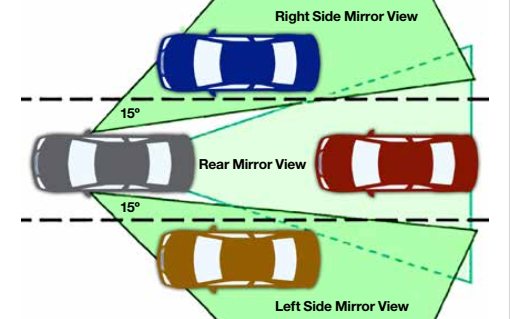
All Locations Closed for New Years Day 2026
All locations are closed Thurs 1 Jan, 2026 for the holiday.
Introduction Continued: Brakes
Brakes
Brakes play a vital role in your family’s safety when on the road. Brakes pads or shoes provide stopping power for your vehicle and should be in good working order. They usually last about 30,000 miles, depending on the driving conditions. Refer to the owner’s manual for recommended maintenance tips for your brakes.
Anti-lock Braking System (ABS)
Cars with anti-lock braking systems automatically check the system when the car is started. In order to stop suddenly in an ABS equipped vehicle, you must use firm brake pressure and maintain this pressure on the brake pedal even if you feel it pulsing or hear a grinding noise. The ABS system pulses the brake 15 times a second to avoid lockup and allows your wheels to keep rolling. Rolling wheels allow you to steer—you cannot change direction if your wheels are sliding. You and your teen should practice applying the hard braking mode in a vacant parking lot before having to use this crash-avoidance technology in a real emergency.
Air Bags

Driver and Front Passenger air bags are designed to inflate in a frontal impact. Drivers should sit at least 10 inches from the air bag because it inflates to six or seven inches in size at speeds up to 200 mph. Tilt the steering wheel as far down as comfortable to point at your chest, not at your face. Always wear a seat belt and secure children in the rear seat. To reduce forearm and hand injuries, hands should be placed on the lower half of the steering wheel, with knuckles on the outside and thumbs stretched along the rim of the wheel.
Side Impact air bags are designed to protect the torso and head in side impact crash. Care should be taken not to sit too close to the door or to lean towards the air bag.
Traction Control
Traction control systems monitor any difference in rotational speed between the front and rear wheels. This differential in wheel rotation may occur on uneven or slippery surfaces. When the system is activated, an automated combination of brake and/or engine control comes into play to provide controlled acceleration and tire traction.
Contemporary Mirror Setting

Adjust the inside mirror so that it frames the entire rear window and becomes the primary mirror for viewing what’s behind the vehicle. Adjust side mirrors to reduce the blind spot and headlight glare from the rear. Adjust the left side mirror by leaning your head towards the left side window, and set the left mirror so that the driver can barely see the side of the car. To adjust the right side mirror, lean to the right over the center console, and set the right mirror so the driver can barely see this side of the car. These adjustments provide a 15 degree viewing area to each side of the vehicle. This mirror setting reduces the overlap between the inside and side view mirrors and allows the driver to monitor the adjacent lane. Traditional settings overlap with the rearview mirror view and should only be used if the view of the highway from the inside rearview mirror is blocked.
Backup Camera

A rear view camera shows a simple video feed from a camera on the rear of the vehicle. Some systems also have overlay distance and trajectory lines to help the driver judge vehicle position. The back-up camera’s field of vision is directly behind the vehicle, and is at least 10 feet wide and 20 feet in length. Families touched by backover tragedies, especially those involving children, have pushed hard to require back-up cameras in all vehicles by 2018.